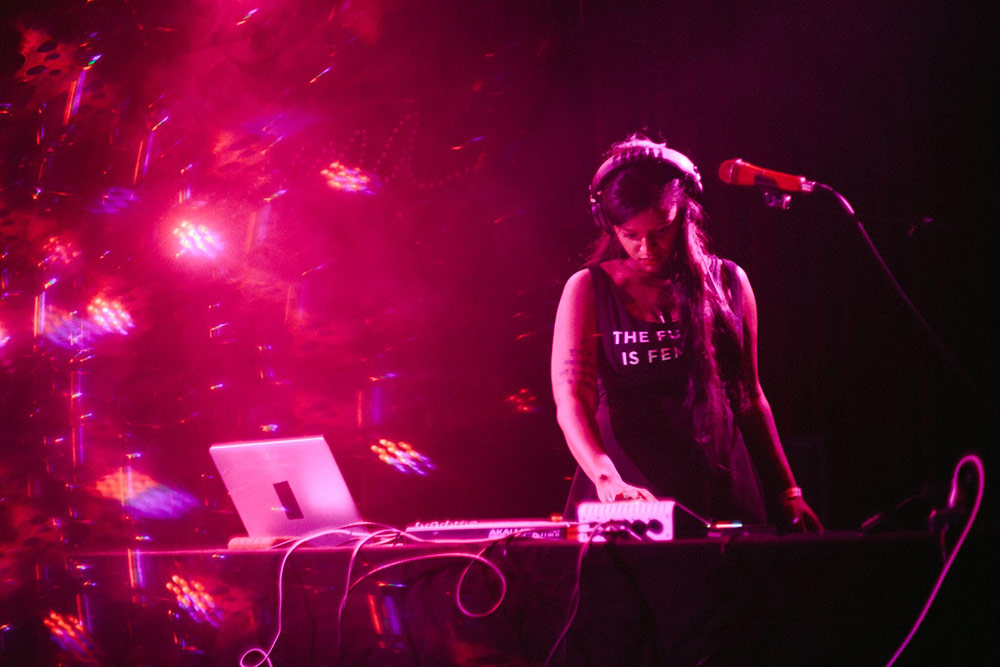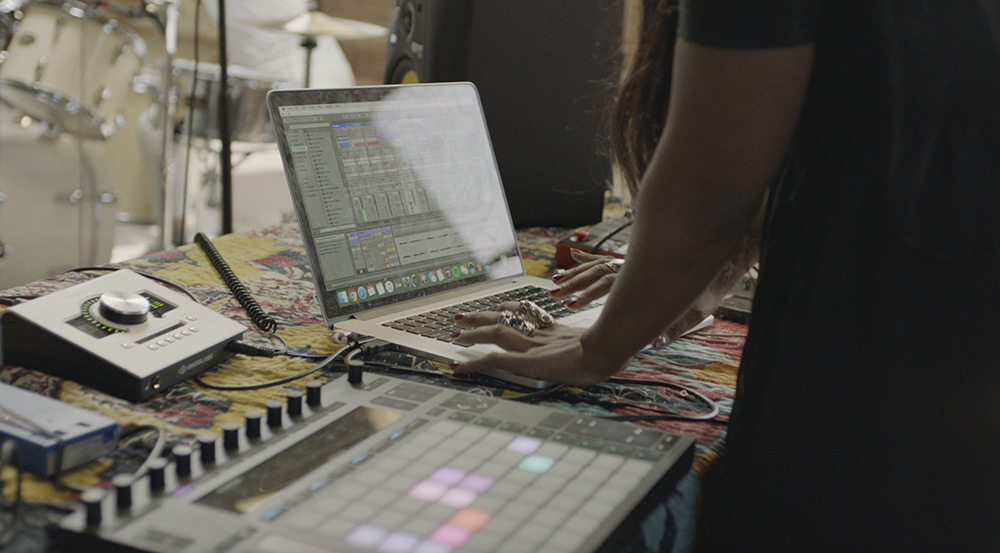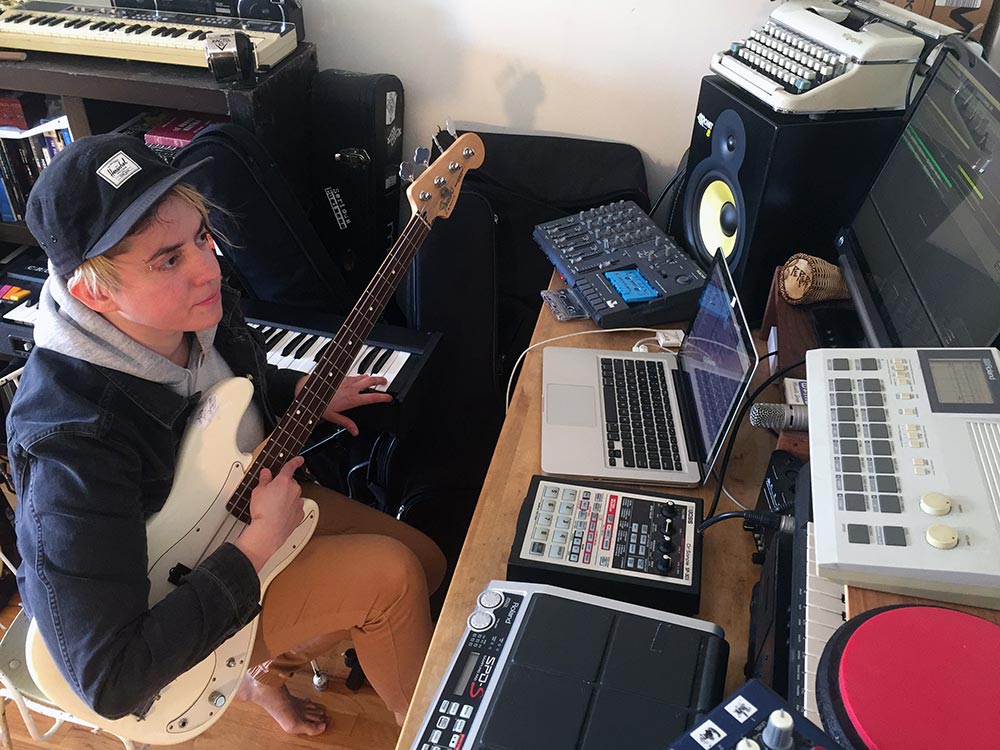Everything you needed to know about digital audio workstations. Consider this, 20 years ago, what you can now accomplish using a laptop with GarageBand required tons of gear. That gear included a multitrack mixing console, a range of microphones, a host of digital keyboards and synthesizers, effects units of all types, and extremely expensive software to arrange and mix down your songs. Today, aspiring musicians can spend an hour learning the basics of recording using the aforementioned program, or one like it, and release a song online that could turn them into an overnight star. Of course, just because someone has the power of a simple digital audio workstation like GarageBand, Ableton Live, or Logic doesn’t mean instant success. But it does mean musicians of all ages and types can now harness the power of recording technology. This used to be the province of largely male engineers and producers or home recording enthusiasts who spent piles of cash on a home studio and years learning the art of recording. While we can now turn our rooms into recording and production studios with just our drums and a computer and a digital audio workstation or DAW, the prospect of learning the wide range of skills required to operate a DAW can be intimidating for many. After all, a more powerful DAW like Ableton or Pro Tools allow one to record and edit audio, manipulate it with an array of effects, chop it up into small sections, and create beats and songs from scratch using software synthesizers, or soft synths, and drum machine emulators. You can even mix and master your tracks at a professional level. But where does one even start with DAWs if you’re new to recording? As drummer and producer, Maia MacDonald puts it, “It really depends on your goals and needs. I recommend any software that feels intuitive and inspiring.” To help you figure out what that software is, we ran through a brief history of DAWs before highlighting some of the most popular and recommended software on the market. In addition, we’ll give you some tips on how to tackle the often overwhelming prospect of learning a whole new software language.

DAWs: A Brief History In the 1960s, when producer Phil Spector was developing his patented Wall of Sound style of production, he had dozens of musicians record onto a single track. This required hours of labor and thousands of dollars in musician and studio fees. Today, a bedroom producer can simply copy and paste one or several takes and layer them on top of one another to achieve a similar effect. But it is in looking at the history of recording and the rise of DAWs that one acquires an appreciation for just how powerful software can be. Up until the 1970s, studios recorded primarily using reel-to-reel magnetic tape, and then someone mixed those tracks using a four-to-sixteen-track mixing console. As the decade progressed and technology improved, producers and bands began to see the studio not just as a place to record but as a sonic laboratory. It was there that wholly new songs could be created from some pre-recorded parts and manipulated through effects and processing. One early and noteworthy example of this can be found in British band This Heat’s “24 Track Loop” that was created in the studio using only the mixing console and effects. It was also in the late ’70s that engineers began to envision a digital version of the studio in which magnetic tape would be replaced by computers that would process the audio, cutting down on the costly tape. In addition, when mixing a recording, engineers had to move the faders by hand, often necessitating multiple hands on the board to achieve the desired mix. The idea that this process could be digitally automated was appealing to many studio engineers, and thus work began on engineering a digital audio workstation. That proved difficult, due to the slow computer processors of the time. With early attempts seen in Soundstream’s digital editing system and Fairlight’s Computer Musical Instrument, the focus soon turned to computers. In particular, these were the Apple II, the Atari ST, and the Commodore Amiga with DAWs like Pro Tools first originating in the early ’80s. But in 1986, there was a major breakthrough in digital recording with the introduction of Musical Instrument Digital Interface or MIDI. It allowed for the digital recording and manipulation of electronic instruments and introduced an accompanying sequencer—a tool that allowed producers to arrange, or sequence, a drum beat or keyboard part. Its design would inform many of the sequencers found in today’s DAWs. By 1993, Apple, Atari, and Commodore began to lose their control over the DAW market, as Windows allowed for a proliferation of new and existing programs like Cubase to reach non-Commodore owners. Since then, DAWs have gradually expanded in power and capability to the point that one only needs a decent computer to gain access to a studio’s worth of gear and tools. In fact, it can often seem like despite there being dozens of DAWs on the market, they all generally tend to do the same thing. But as composer and sound designer Alexia Riner, who first started as a drummer, puts it, “I really encourage all musicians to try and expose themselves to as many DAWs as possible, because each one is geared towards a specific production style.” Here are some of the go-to DAWs for musicians and producers of all stripes. GarageBand Though GarageBand is only available to Apple users, this beginner-friendly DAW is the reason many aspiring musicians buy MacBooks and other Apple computers as it comes pre-installed. And if you have an older Apple, you can get the latest version of GarageBand for free just by downloading the latest OS for Mac. For a few extra bucks, you get access to a massive number of sounds, including Logic Pro X’s drummer samples. Since Apple makes Logic, the two programs are compatible, making it easy to import projects into the latest edition of the professional software. Part of what makes GarageBand such a great place to start before investing hundreds of dollars in a more advanced DAW is that it presupposes little recording knowledge, making it easy to record a live performance, arrange a song, or make a beat from scratch using its sizable collection of MIDI instruments, sounds, and loops. You can also import other songs or recordings and isolate a particular section in order to sample it. So whether you’re just dipping your toes into the world of DAWs, or biding your time until you can afford one of the following DAWs, GarageBand is a great place to learn a lot of the fundamentals of home recording. Ableton Live Debuting in 2001 for both Mac and Windows, Ableton Live has become one of the most popular and ubiquitous DAWs due to its interface. You can use it for live performances, as many bands often play backing tracks originally recorded in Live during shows. This is what really sets Ableton apart. The software is uniquely suited for this purpose in that it is extremely easy to run both acoustic and digital instruments through the software. As drummer and producer, KCox from Tallahassee, Florida, puts it, “Ableton is beneficial, because I can perform and incorporate live instruments.” Composer and sound designer Alexia Riner echoes this sentiment, adding “Ableton Live is also very simple to integrate with drums and other instruments, which comes in handy in a band setting.” Live comes loaded with an array of synthesizers, drum sounds, loops, several different samplers, and it allows you to interface with a host of other DAWs, like Propellerhead’s Reason, which is renowned for its soft synths that you can play within Ableton. Another reason that so many producers, both new and experienced alike, are drawn to Ableton is its intuitive and easy-to-use interface. “One of my favorite things about Ableton Live that enabled me to learn it so quickly was a feature that allows you to move your mouse over any object or word in Live and receive an explanation of that object at the bottom of the software,” says Riner, adding that, “you can put songs together very quickly.” Finally, one important component for many producers and drummers that use Ableton is having a physical interface with which to easily control the software’s different tracks while pounding out a new beat or melody on the fly. Although there are a large number of second-party hardware controllers, Ableton’s push control pad has been adopted by a number of musicians, including Riner. Ableton is available in three differently priced versions, ranging from $99 to around $800.

Logic Logic was one of the first DAWs on the market. Apple acquired Logic in 2002 and has made it strictly available for Apple computers ever since. That said, the considerable power that Logic packs has led many lifelong PC users to switch to Apple. With Logic Pro X featuring over 50GB of sounds and effects, users can design their own drum kits and even control the software using their iPad. While Logic tends to have the reputation for being used primarily within a studio and not in live performances, drummers and other musicians tout its impressive drum machines and vast library of instruments that still make it easy to integrate live instruments. Professional drummer Gina “G” Osmar states, “I make my own backing tracks on Logic Pro X to put drums to. Then I don’t have to worry about playing on songs because of copyright issues.” Indeed, DAWs don’t just help drummers to create their own worlds of sound, they also help drummers to expand their vocabulary as players: Using DAWs, drummers can program beats or backing tracks with which they can drum along. And at $200, Logic provides a considerable bang for the buck. Other DAWs to Check Out While GarageBand, Ableton, and Logic may be three of the most popular DAWs, there are numerous other options for the enterprising home recorder and producer. Here are a few others we particularly like. Cubase—Available for both Windows and Macs, Cubase has been around for over two decades, and its easy-to-use grid sequencer has made it popular with dance producers around the world. FL Studio—With its origins in the free Fruity Loops upon which many of today’s biggest dance producers first cut their teeth, FL Studio is a solid introductory DAW that is easy to learn and compatible with most plug-ins and hardware. Avid Pro Tools—Another major early DAW that was a studio staple in the late ’90s, it has a considerable learning curve and price tag, but is also generally considered amongst the best DAWs for recording live instruments. Going Forward Just as there is no one “right” DAW, as it varies depending on a person’s particular needs and budget, there is no single way to approach learning a DAW. When we look back at the invention of genres like hip hop, house, and techno—all of which were pioneered outside of a professional studio—we see that they came about through their originators simply experimenting with drum machines and synthesizers and often using them the “wrong way.” As MacDonald puts it, “I think it’s liberating to be open-minded about the ways you use your instruments and software. Feel your way through. Read the manual if you feel like it. Or don’t. Use expensive stuff, or don’t. Throw away any stress about what you think you’re supposed to do. Any sound can be percussive, anything might work as a drum sample. Use a tool for a different purpose than what was intended. Do what feels exciting. It doesn’t matter how you get there.” Of course, if you’re someone who does better with some instruction, YouTube is absolutely packed with different tutorial videos for every type of DAW out there. In addition, there are a number of schools and teachers who specialize in music production that offer classes for producers of all experience levels. Regardless of the path you take to find your perfect DAW–and how you use it–learning production as a drummer not only widens your understanding of constructing beats, both on the screen and IRL, but it empowers you to look beyond the kit to a world of musical possibilities. Or as Riner so nicely articulates, “I think when a drummer learns production, they open up an entire world of possibilities for themselves, which allows them to grow as an artist. With production skills, drummers can record themselves, expand their live setup, and further understand the intricacies of their instrument, which can make them much better players. Having production skills also strengthens your arranging skills and can help drummers to understand how different components of music fit together.” So if you’re curious about exploring the world of DAWs and digital production, take a leap, and start experimenting with GarageBand or a free-to-download program, and find the path that’s right for you. This article first appeared in Tom Tom‘s Digital issue. Be sure to subscribe to Tom Tom in print here. Check out our most recent print issue here.


